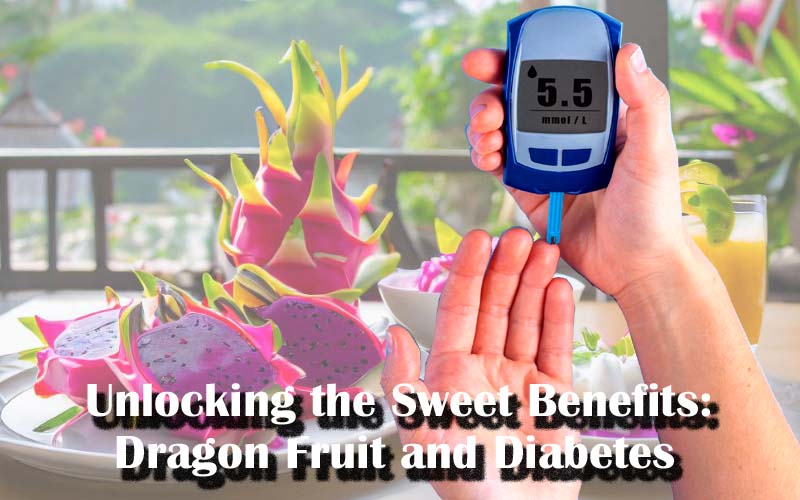
Introduction:
This blog is my honest attempt to let you decide the best dragon fruit for you.
Dragon fruit, also recognized as pitaya or pitahaya, has captivated a global audience not only for its striking appearance but also for its nutritional richness.
Among the diverse spectrum of hues available, the red, white, and yellow dragon fruits stand out as the most widespread varieties.
In this in-depth analysis, we explore the distinctive characteristics of each, exploring their taste, nutritional content, and health benefits to help you select the ideal variety based on your preferences and health considerations.
Contents
Red Dragon Fruit: A Radiant Pleasure

Appearance: The red dragon fruit, scientifically identified as Hylocereus costaricensis, showcases a vivid pink to deep red exterior adorned with green-scale-like spikes. The flesh inside is typically a vibrant magenta speckled with small black seeds.
Taste: Celebrated for its slightly sweet and mildly tangy flavor, the red dragon fruit’s texture is often likened to a cross between a kiwi and a pear, offering a refreshing option for those who savor a delicate tropical taste.
Nutritional Content: The red dragon fruit emerges as a nutritional powerhouse, boasting low calories and high levels of essential nutrients such as vitamin C, fiber, antioxidants, and various B vitamins. Additionally, the fruit contains betalains, potent antioxidants known for their anti-inflammatory properties.
Health Benefits of Red Dragon Fruit:
- Immune System Boost: The elevated vitamin C content aids in supporting a robust immune system, enhancing the body’s ability to fend off infections.
- Antioxidant Defense: The presence of betalains and other antioxidants contributes to neutralizing free radicals, safeguarding cells from oxidative stress.
- Digestive Health: The fiber content promotes healthy digestion, contributing to a flourishing gut.
White Dragon Fruit: Subtle Elegance Personified

Appearance: The white dragon fruit, scientifically named Hylocereus undatus, features a bright yellow or pink outer skin, often adorned with fewer and smaller spikes compared to the red variety. The interior is a pristine white, speckled with tiny black seeds.
Taste: Delivering a milder, sweeter taste in comparison to its red counterpart, the white dragon fruit boasts a flavor described as a fusion of pear and kiwi, with a subtle floral undertone.
Nutritional Content: Sharing many nutritional attributes with the red variety, the white dragon fruit is rich in vitamin C, fiber, antioxidants, and essential minerals. The seeds also contain beneficial polyunsaturated fats.
Health Benefits of White Dragon Fruit:
- Skin Health: The antioxidants in white dragon fruit contribute to maintaining healthy skin by combatting oxidative stress and supporting collagen production.
- Cardiovascular Health: The combination of fiber and healthy fats in white dragon fruit may contribute to a heart-healthy diet by promoting lower cholesterol levels.
Yellow Dragon Fruit: Tropical Sunshine in Every Bite

Appearance: The yellow dragon fruit, scientifically known as Selenicereus megalanthus, stands out with its bright yellow skin and distinctive shape. The flesh inside can be either white or yellow, punctuated with small black seeds.
Taste: Offering a sweeter and milder flavor compared to both red and white varieties, the yellow dragon fruit’s taste is reminiscent of a blend between melon and pear, making it a delightful tropical indulgence.
Nutritional Content: Similar to its red and white counterparts, the yellow dragon fruit is abundant in vitamin C, fiber, antioxidants, and essential minerals. The vibrant yellow color is attributed to the presence of carotenoids.
Health Benefits of Yellow Dragon Fruit:
- Vision Health: Carotenoids, including beta-carotene, contribute to maintaining eye health and may reduce the risk of age-related macular degeneration.
- Hydration: The high water content in yellow dragon fruit supports hydration and contributes to healthy skin.
Choosing the Best Dragon Fruit for Your Health Needs:

While all three dragon fruit varieties offer impressive health benefits, the selection between red, white, and yellow dragon fruits ultimately depends on personal preferences and health objectives.
- For Immune Support: Red dragon fruit, with its high vitamin C content, is an excellent choice to fortify the immune system.
- For Skin Health: Both white and yellow dragon fruits, rich in antioxidants, contribute to healthy skin, but white dragon fruit may have a slight edge due to its milder taste.
- For Cardiovascular Health: White dragon fruit, with its blend of fiber and healthy fats, may be preferable for promoting heart health.
Conclusion:
In conclusion, the decision between red, white, and yellow dragon fruits hinges on individual taste preferences and health aspirations. Including a variety of colors in your diet ensures a diverse array of nutrients, fostering overall well-being. Whether you opt for the vibrant red, the subtle elegance of white, or the tropical sunshine embodied in yellow, dragon fruit remains a delectable and nutritious addition to a balanced diet.
Note: The information provided in this article is based on general knowledge and may vary based on individual factors. For personalized dietary advice, it is recommended to consult with a healthcare professional or a registered dietitian.
Sources:
- Rodriguez, R. (2010). Pitahaya (Dragon Fruit). Purdue University Center for New Crops & Plant Products.
- Guo, S., Duan, J. A., Qian, D., Tang, Y., & Wu, D. (2007). Identification of betalains from red dragon fruit (Hylocereus polyrhizus) by high-performance liquid chromatography–electrospray ionization mass spectrometry. Journal of Agricultural and Food Chemistry, 55(15), 6439-6444.
- Simon, J. E., & Decker-Walters, D. S. (1997). Hylocereus: a plant for the world. United States Department of Agriculture, Agricultural Research Service.
- Shimada, T., Saito, K., Tomita, M., & Yonekura, M. (2006). Antioxidative activities of flesh and peel of Japanese persimmons harvested from different regions in Japan. Food Chemistry, 99(1), 38-45.
- Stintzing, F. C., & Carle, R. (2005). Betalains–emerging prospects for food scientists. Trends in Food Science & Technology, 16(12), 483-490.









